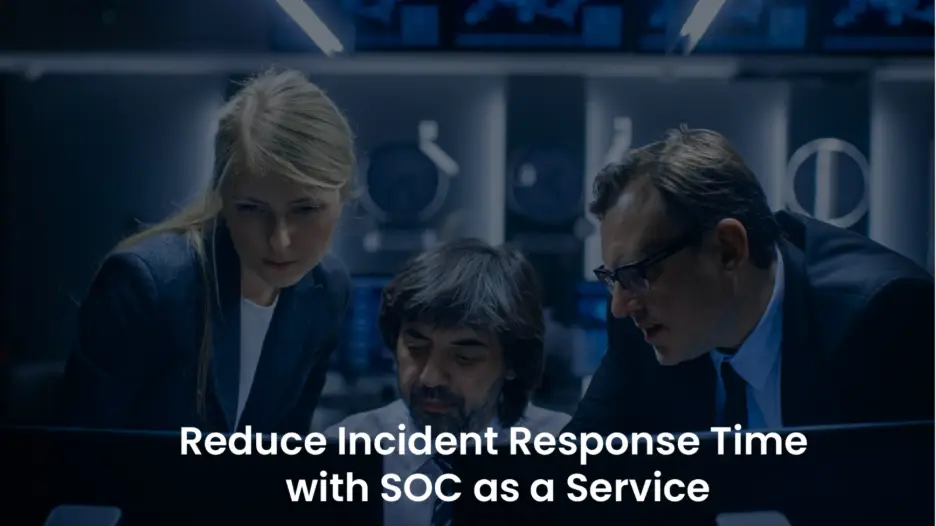
Before diving into the intricacies of SOC as a Service (SOCaaS), it is essential to first grasp the fundamentals of a Security Operations Center (SOC), including its vital functions, capabilities, and the crucial role it plays in protecting an organization’s digital infrastructure. Understanding this context underscores the importance of SOCaaS.
This article explores how SOC as a Service significantly reduces incident response time by discussing its critical importance, best practices, and essential metrics such as MTTD (Mean Time to Detect) and MTTR (Mean Time to Respond). It elaborates on the ways SOCs ensure continuous monitoring, apply automated triage, and coordinate responses across diverse cloud and endpoint environments. Additionally, it highlights how integrating SOCaaS with existing security frameworks enhances visibility and fortifies cybersecurity resilience. Readers will gain valuable insights into how SOC strategy, drills, and threat intelligence contribute to quicker containment, along with the benefits of leveraging managed SOC services to access seasoned analysts, advanced tools, and scalable processes without the necessity to build these capabilities internally.
Actionable Strategies to Significantly Reduce Incident Response Time Using SOC as a Service
To effectively reduce incident response time leveraging SOC as a Service (SOCaaS), organizations must align technology, processes, and expert knowledge to quickly identify and mitigate potential threats before they escalate into critical issues. A trustworthy managed SOC provider integrates ongoing monitoring, sophisticated automation, and a skilled security team, enhancing every stage of the incident response lifecycle.
A Security Operations Center (SOC) acts as the central command center for an organization’s cybersecurity strategy. When delivered as a managed service, SOCaaS combines essential elements such as threat detection, threat intelligence, and incident management into a cohesive framework, allowing organizations to respond to security incidents promptly and effectively.
Effective strategies to minimize response time include:
- Continuous Monitoring and Detection Strategies: By utilizing cutting-edge security tools and SIEM (Security Information and Event Management) platforms, organizations can meticulously analyze logs and correlate security events across various endpoints, networks, and cloud services. This continuous monitoring offers a holistic view of emerging threats, dramatically decreasing detection times and aiding in the prevention of potential breaches.
- Leveraging Automation and Advanced Machine Learning: SOCaaS platforms harness the capabilities of machine learning to automate repetitive triage tasks, prioritize critical alerts, and implement predefined containment strategies. This automation reduces the time security analysts spend on manual investigations, facilitating quicker and more efficient incident responses.
- Expert SOC Team with Clearly Defined Roles: A managed response team consists of seasoned SOC analysts, cybersecurity experts, and incident response specialists who operate with clearly defined roles and responsibilities. This structured approach guarantees that every alert receives immediate and appropriate attention, enhancing the overall effectiveness of incident management.
- Integrated Threat Intelligence and Proactive Threat Hunting: Proactive threat hunting, backed by comprehensive threat intelligence, facilitates the early detection of suspicious activities, thereby reducing the risk of successful exploitation and strengthening incident response capabilities.
- Unified Security Stack for Enhanced Incident Coordination: SOCaaS centralizes various security operations, threat detection, and information security functions within a single provider. This integration fosters improved coordination among security operations centers, resulting in faster response times and decreased resolution time for incidents.
Why is SOC as a Service Indispensable for Minimizing Incident Response Time?
Here’s why SOCaaS is essential:
- Real-Time Visibility Across All Security Vectors: SOC as a Service provides real-time visibility across endpoints, networks, and cloud infrastructures, enabling the early identification of vulnerabilities and anomalies before they escalate into significant security breaches.
- 24/7 Monitoring and Rapid Incident Response: Managed SOC operations operate continuously, diligently analyzing security alerts and events. This round-the-clock vigilance ensures prompt incident responses and swift containment of cyber threats, thereby enhancing the overall security posture of the organization.
- Access to Highly Skilled Security Professionals: Partnering with a managed service provider offers organizations access to highly trained security experts and incident response teams. These professionals can effectively evaluate, prioritize, and address incidents in a timely manner, alleviating the financial burden associated with maintaining an in-house SOC.
- Automated and Integrated Security Solutions: SOCaaS integrates advanced security solutions, analytics, and automated response protocols to streamline incident response strategies, significantly diminishing delays caused by human intervention during threat analysis and remediation.
- Enhanced Capabilities in Threat Intelligence: Managed SOC providers leverage global threat intelligence to proactively anticipate emerging risks within the evolving threat landscape, thereby strengthening an organization’s defenses against potential cyber threats.
- Holistic Improvement of Overall Security Posture: By integrating automation with experienced analysts and scalable infrastructure, SOCaaS empowers organizations to maintain a resilient security posture, meeting contemporary security demands without straining internal resources.
- Strategic Alignment for Enhanced Focus on Core Security Initiatives: SOC as a Service allows organizations to focus on strategic security objectives while the third-party provider manages daily monitoring, detection, and threat response activities, effectively minimizing the mean time to detect and resolve incidents.
- Effective Real-Time Management of Security Incidents: Integrated SOC monitoring and analytics provide a comprehensive view of security events, enabling managed security services to efficiently identify, respond to, and recover from potential security incidents with remarkable speed.
What Established Best Practices Can Optimize Incident Response Time with SOCaaS?
Here are the most effective best practices:
- Develop a Comprehensive SOC Strategy: Clearly outline structured processes for detection, escalation, and remediation. A well-defined SOC strategy ensures that each phase of the incident response process is conducted efficiently across various teams, thereby enhancing overall effectiveness.
- Implement Continuous Security Monitoring Across All Domains: Ensure round-the-clock security monitoring across all networks, endpoints, and cloud environments. This proactive approach facilitates the early detection of anomalies, significantly shortening the time required to identify and contain potential threats before they escalate.
- Automate Incident Response Workflows for Increased Efficiency: Integrate automation within SOC solutions to hasten triage, analysis, and remediation processes. Automation minimizes the need for manual intervention while improving the overall quality of response operations.
- Utilize Managed Cybersecurity Services for Greater Scalability: Partnering with specialized cybersecurity service providers enables organizations to effortlessly scale their services while ensuring expert-led threat detection and mitigation without the operational challenges of maintaining an in-house SOC.
- Conduct Regular Threat Simulations to Enhance Preparedness: Execute simulated attacks, such as DDoS (Distributed Denial of Service) drills, to assess an organization’s security readiness. These simulations identify operational gaps and refine the incident response process, boosting overall resilience.
- Strengthen Data Security and Visibility Across Systems: SOCaaS platforms consolidate telemetry from various systems, providing unified visibility into network, application, and data security layers. This comprehensive perspective significantly reduces the time between detection and containment of threats.
- Integrate SOC with Existing Security Tools for Cohesion: Align current security tools and platforms within the managed SOC ecosystem to eliminate silos and improve overall security outcomes, fostering a more collaborative security environment.
- Adopt Solutions That Comply with Industry Standards: Collaborate with reputable vendors, such as Palo Alto Networks, to integrate standardized security solutions and frameworks that enhance interoperability and diminish the occurrence of false positives.
- Continuously Measure and Optimize Incident Response Performance: Regularly track key metrics, including mean time to detect (MTTD) and mean time to respond (MTTR), to uncover opportunities for minimizing delays in response cycles and enhancing the maturity of SOC operations.
The Article Reduce Incident Response Time with SOC as a Service Was Found On https://limitsofstrategy.com

